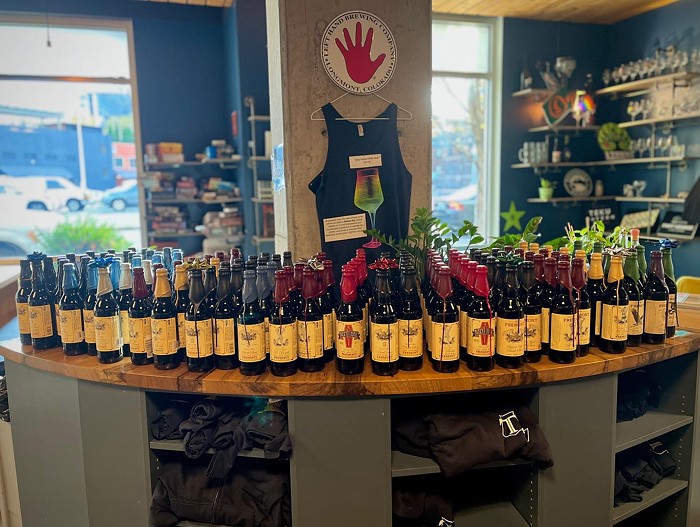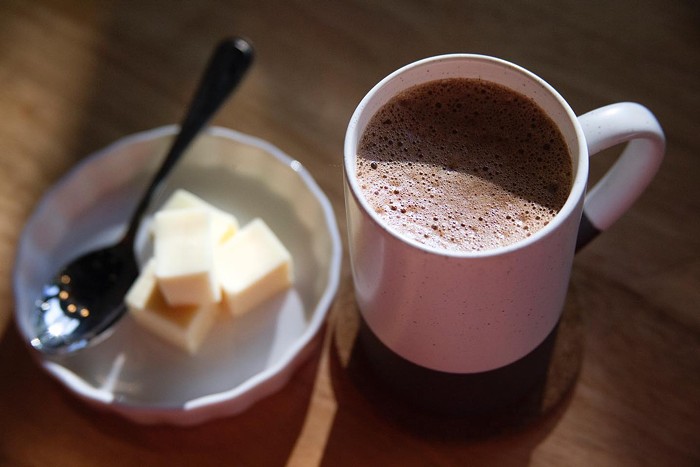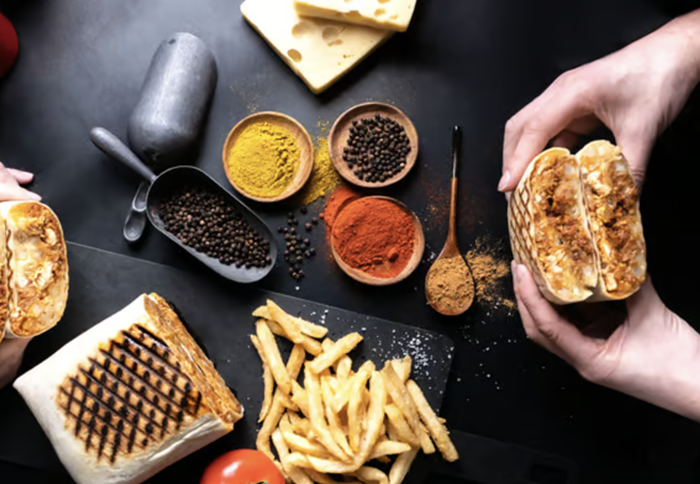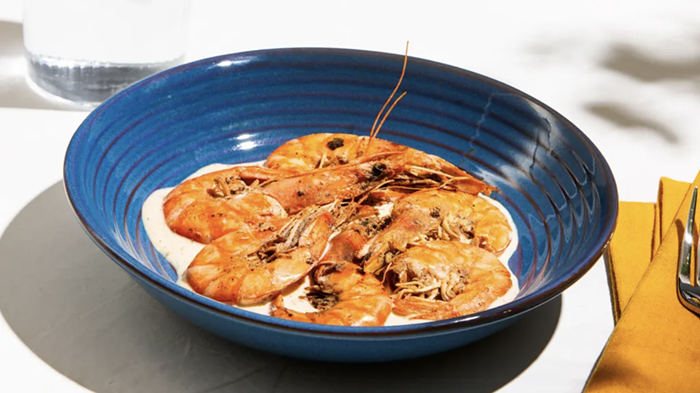The first thing I notice when I walk into Tidbit Bistro on a sunny Friday evening is that everyone is happy. Four friends at a table by the window exclaim as several plates of tapas arrive; a clutch of young women burst into laughter in unison as the lemony light illuminates their empty martini glasses; and a guy in the corner sits contentedly over some effervescent prosecco. My wife and I look at each other and realize that we've found the perfect antidote to this dreary, drizzly early spring—a postcard from the bright and glittering Mediterranean.
As we are escorted to our choice of tables (the warm, well-lit room is about three-quarters full), we take in the space. It's light and airy, welcoming, a little noisy. My wife remarks upon the harmonious pairing of sunflower and maroon on the walls. And while she finds the addition of dusky orange accents a bit much, it feels right to me, less hesitant Seattle, more garrulous Valencia.
The food perpetuates the illusion that, however temporarily, we have migrated to a warmer place. We begin with tapas. Everything looks good, from varieties of crostini and lamb albóndigas (Spanish meatballs) to prawns sautéed in sherry to rosemary-scented sweet-potato fries, but we try to ration ourselves to save room for the equally appealing entrées. I choose the crostino español ($2.50), which combines a distinguished slice of chorizo and some crushed tomato and garlic atop a plank of nicely toasted bread. It's gone in three bites.
The beauty of the tapa lies in its evanescence. You're just realizing how good it is when it's gone. It forces you to make a choice. Should you immediately order three more or should you trust that the kitchen that made such a beautiful nibble will make more, and perhaps even surpass the first? With difficulty, I refrain from ordering three more.
Next to arrive is the arancino ($2.50), which justifies my temperance. Arancia in Italian means "orange," so arancino translates as "little orange," which is sort of what this marvelous creation looks like: a fried risotto ball stuffed with mozzarella and a hint of saffron, and served in a tomato sauce that manages to be rich but not overwhelming. The ball of cheese, however, is another matter; it's heavy and gooey yet small enough that it, too, is gone before your overburdened arteries can close down in complaint.
The size of Spanish appetizers ranges from pinchos (a bite) to tapas (half a dozen bites) to raciones, which are basically about half the size of an entrée. Our final appetizer, the carpaccio di bresaola ($10), ends up somewhere in between a tapa and a racion. The salted, cured beef almost melts on the tongue (it's nice to let it linger there for a second before chewing), but what really makes the dish is the contrast of the bracing arugula. A bit of fennel adds to the wonderful complexity that inspires me to order another glass of wine.
Service is unobtrusive, friendly, and understanding, even when I somehow forget how to drink from a glass and spill a large amount of water all over the table. Some blotting, a new napkin, and it's like it never happened. The empty tapas plates are replaced magically (the joys of going out to eat) by our entrées. The manicaretto ($16) arrives steaming in a hot CorningWare dish that reminds me of my childhood. Cheese tortellini cuddle with small pieces of salty ham and mushrooms under a sheet of baked pasta, while tomato sauce and ricotta bubble alongside. It's good, hearty, Italian-mom food.
But it's the cordero a la plancha ($23), grilled leg of lamb, where the kitchen outdoes itself. The lamb, which is served shaved atop a hummock of fluffy potato cake, is the best I've had in Seattle. It comes with a dab of olive tapenade on one side and mustard aioli on the other. Both are nice complements, but I think the mustard brings out the sweetness of the lamb in a way I've never tasted before.
Although we've been stuffed since before the entrées arrived, we convince ourselves—not wanting the evening to end—to share a selection of various liqueurs that Tidbit calls a "*cello flight" ($15). Limoncello is made by steeping lemon zest in grain alcohol in a cool, dark place for anywhere between a couple weeks and two months. When mixed with simple syrup, you've got one of the national drinks of Italy and some damn potent lemony deliciousness. To the traditional limoncello, the Tidbit flight adds an orangecello, a nocello (walnut and hazelnut), and a creamy limoncello that's made with milk and sugar instead of simple syrup. We decide that the only thing missing is a scoop of lemon tartufo ($6), which consists of lemon gelato with a limoncello core, dusted with lemon meringue flakes. It all adds up to sweet, sweet nirvana courtesy of that always-trusty combination of sugar, fruit, and liquor.
Tidbit calls itself a casual, family-friendly restaurant, a place where friends and family can gather for comfort food and good times. And though I still cringe a bit at the Olive Garden–like description, Tidbit actually makes good on its promise. Friendly folk, good food, abundant alcohol, and a warm, laid-back ambience—and they're even opening up a small outdoor patio for those brief, sun-drenched summer days that are surely almost here.



















